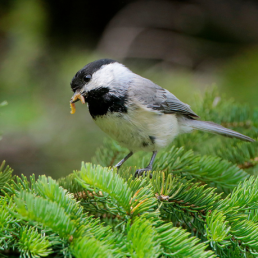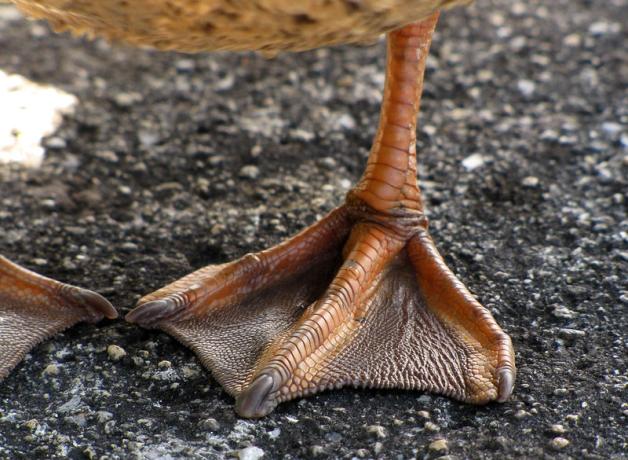

Join BirdNote tomorrow, November 30th!
Illustrator David Sibley and actor H. Jon Benjamin will face off in the bird illustration battle of the century during BirdNote's Year-end Celebration and Auction!
Webbed feet are ideal for birds that swim, on the water’s surface or under. In fact, they’re such a nifty adaptation that they evolved, independently, in several bird groups. Ducks and geese, gulls, cormorants, loons, pelicans, penguins, puffins and boobies all have webbed feet.
BirdNote®
The Beauty of Webbed Feet
Written by Bob Sundstrom
This is BirdNote.
[Gadwall and Canada Goose calls, https://macaulaylibrary.org/asset/125406651, 0.17-.20]
Webbed feet are ideal for birds that swim, on the water’s surface or under. In fact, they’re such a nifty adaptation that they evolved, independently, in several bird groups.
Ducks and geese have them, as do gulls, cormorants, loons, pelicans, penguins, puffins and boobies.
Experiments suggest that a triangular webbed foot is beautifully designed to propel a bird, or other creature, through the water.
The toes and webs spread out as the bird pushes its foot backward. Then as the bird pulls its foot forward, the toes fold together, to minimize resistance. And many birds have mastered a stroke that any human swimmer might envy. A bird may lift its foot away from its body on the forward stroke, actually giving itself a little extra lift and speed.
[Mallard quacking during Gadwall recording, https://macaulaylibrary.org/asset/125406651, 1.26-1.28]
Four hundred different species of birds have webbed feet. And a parallel adaptation shows up in other creatures that spend time in the water—like otters, frogs and salamanders.
It’s clear that webbed feet have been a big evolutionary hit. Regardless of who’s wearing them.
For BirdNote, I’m Michael Stein.
Today’s show brought to you by the Bobolink Foundation.
[Mallard quacking during Gadwall recording, https://macaulaylibrary.org/asset/125406651, 1.26-1.28]
###
Senior Producer: Mark Bramhill
Producer: Sam Johnson
Managing Editor: Jazzi Johnson
Content Director: Jonese Franklin
Bird sounds provided by The Macaulay Library of Natural Sounds at the Cornell Lab of Ornithology, Ithaca, New York. Gadwalls, Canada Geese, and Mallard recorded by T. Johnson.
BirdNote’s theme was composed and played by Nancy Rumbel and John Kessler.
© 2020 BirdNote March 2020 / January 2025 Narrator: Michael Stein
ID# feet-02-2020-03-30 feet-02
primary source: https://www.sciencemag.org/news/2003/07/power-webbed-feet
see also: https://www.worldatlas.com/articles/why-do-some-animals-have-webbed-fee…



